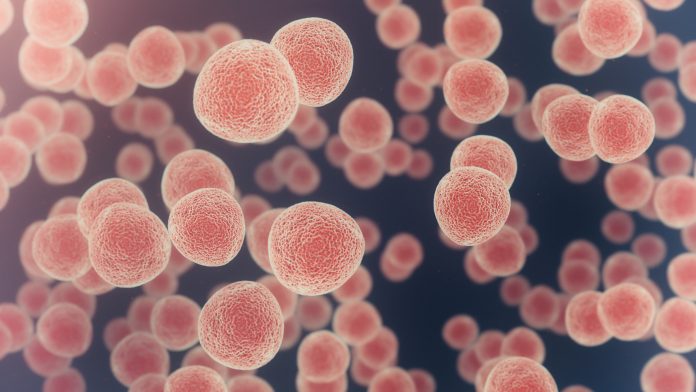
In a preclinical study, Colorado University (CU), Boulder, researchers have revealed a new way to inhibit the most commonly mutated gene underlying human tumor growth, opening the door to new therapeutic strategies for cancer and a host of other diseases.
The findings are published in the journal Cell Reports.
“DNA-binding TFs remain challenging to target with molecular probes,” the researchers wrote. “Many TFs function in part through interaction with Mediator, a 26-subunit complex that controls RNA polymerase II activity genome-wide. We sought to block p53 function by disrupting the p53-Mediator interaction. Through rational design and activity-based screening, we characterize a stapled peptide, with functional mimics of both p53 activation domains, that blocks p53-Mediator binding and selectively inhibits p53-dependent transcription in human cells; importantly, this “bivalent” peptide has negligible impact, genome-wide, on non-p53 target genes.”
“This class of proteins represents one of the most high-impact therapeutic targets in biomedicine,” said senior author and biochemistry professor Dylan Taatjes, PhD. “We provide a completely new strategy for blocking transcription factor function that could have broad applications to many diseases, including and beyond cancer.”
When a TF is mutated, those instructions can go awry, turning a beneficial protein into a harmful one “like Jekyll and Hyde,” said Taatjes.
“Unfortunately, despite the huge potential and years of effort, therapeutic targeting of transcription factors has proven largely intractable,” Taatjes added.
The CU Boulder researchers and a team of scientists, including Alanna Schepartz, PhD, professor of chemistry at the University of California, Berkeley, have spent years developing a workaround. In laboratory studies of human cancer cells, the researchers found that when they applied a novel peptide, they could prevent p53 from working.
“A decades-long goal has been to target drug transcription factors directly,” said Taatjes. “Here we have found a way to get the functional equivalent without actually targeting the transcription factor but Mediator instead. And, importantly, this does not negatively affect other transcription factors in the cell.”
More research is needed before the strategy could become implemented in the clinic. However, the approach could be applied to many other TFs that have been implicated in disease, opening the door to new treatment strategies for everything from heart disease to neurological disorders.
“The methods we discuss here could potentially apply to any disease that is driven by aberrant transcription factor function,” Taatjes said.













